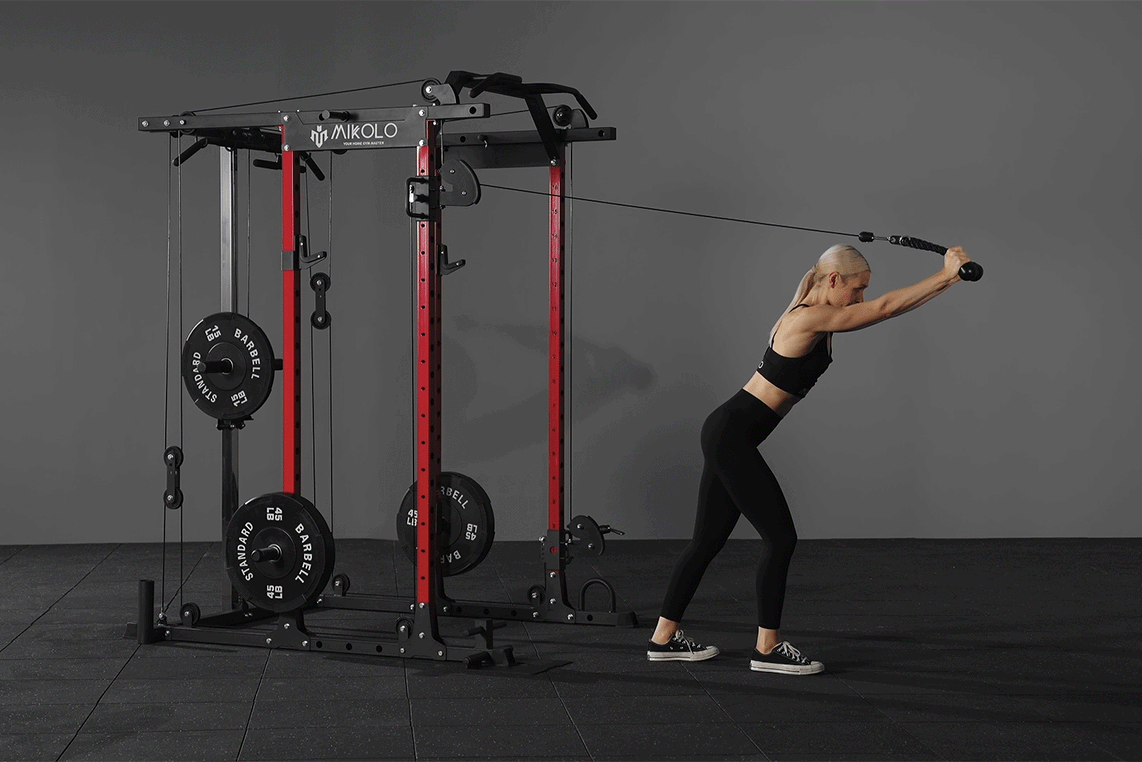Dip bars are a staple in strength training, especially for developing the chest, triceps, shoulders, and even the core. However, many home gym owners overlook one critical factor that affects both comfort and performance: the dimensions of the dip station—especially the width and height of the bars.
In this article, we’ll break down the ideal dip bar width and height, explain how different measurements impact your training, and offer practical insights from real-world use.
What Is the Ideal Width of Dip Bars?
The width of dip bars refers to the distance between the two parallel bars. This measurement significantly affects how your body moves through the exercise.
General Guidelines for Dip Bar Width:
-
Shoulder-width or slightly wider is considered ideal for most users.
-
A common width range: 45–60 cm (approximately 18–24 inches).
-
Wider bars (up to 70 cm / 27.5 inches) are often used for taller individuals or for chest-focused dips.
-
Narrower widths (around 35–45 cm) may target the triceps more but can feel cramped or put strain on the wrists and shoulders.
From experience, a width around 54 cm works best for the majority of users. It's wide enough to give space for the chest to open during dips, but still close enough to keep triceps engaged.
How Far Apart Should Dip Bars Be?
Technically, this is the same question as width—but it’s worth answering from a user’s standpoint. When the bars are too far apart, you’ll notice excessive strain on your shoulders during the descent. If they’re too close, your elbows may flare, and your wrists will feel compressed.
Here’s a rough breakdown of bar spacing and who it’s good for:
| Dip Bar Width (cm) | Best For |
|---|---|
| 35–45 | Triceps-focused dips, smaller users |
| 50–54 | Balanced dips, average body sizes |
| 60–70 | Chest-focused dips, taller users |
I once trained on bars spaced at 70 cm, thinking wider meant more range. But I ended up with shoulder tightness after just a few sessions. Once I returned to a 50–54 cm setup, the pain stopped, and progress returned quickly.
Dip Bar Height: What’s Best?
Dip bar height determines how much clearance you have from the ground. The average height of commercial dip stations ranges from 100–110 cm (about 40–43 inches). This allows users to perform full-range dips without feet touching the floor.
However, if you're using a wall-mounted or rack-mounted dip station, adjustable height options are ideal. Taller users may benefit from 110 cm or more, while shorter users might prefer 90–100 cm for easier mounting and dismounting.
Quick Reference: Dip Bar Height
-
40–45 inches (100–115 cm) = standard fixed bar height
-
30–35 inches (76–89 cm) = bench or low-mount dip stations
-
Choose a height that allows full range of motion with legs extended or knees bent
Dip Bar Dimensions: Other Things to Consider
Beyond width and height, consider these factors:
-
Bar diameter: Ideal is 4–5 cm (1.5–2 inches) for grip comfort.
-
Bar angle: Some bars flare outward to allow for multiple grip widths.
-
Weight capacity: Make sure the station supports your bodyweight plus any added resistance.
-
Stability: Wobbly or narrow-base bars are not only frustrating—they’re dangerous.
Final Thoughts
There’s no one-size-fits-all dip bar. The best dip station width and height depends on your body mechanics, training goals, and available space. If in doubt, aim for a 50–54 cm width and a height around 100–110 cm to ensure comfort and performance.
Take the time to test or adjust your dip setup—it’s a small detail that pays off in long-term joint health and muscle development.











































Leave a comment
This site is protected by hCaptcha and the hCaptcha Privacy Policy and Terms of Service apply.